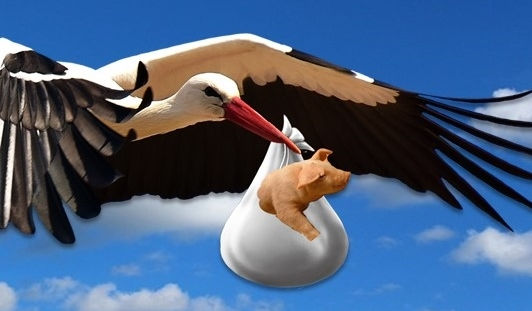Pre-weaning weight of piglets: the key to a healthy future
- Jean-Paul Laforest
- 31 août 2018
- 2 min de lecture
The animal production industry has always faced many challenges. The stakeholders continuously strive to improve production performance to ensure the cost-efficiency of each farm without compromising animal welfare, while minimizing environmental impact. Furthermore, consumers always seek healthier alternatives and want to ensure that animals eat and are exposed to “natural” compounds recommended for human consumption.

The implementation of new regulations to reduce the use of antibiotics in animal husbandry, has led to a frantic race to develop new feed additives and alternatives to antibiotics that will support animal health. Even the most promising additives identified to date by researchers are not more effective than classic antimicrobial substances. It should be noted that scientist evaluate the positive impact of a new food additive by monitoring their effect on the microbial intestinal flora of pigs (i.e. the microbiota) or the response of the immune system during infection. The diversity of the microbiota causes headaches for many laboratories, as this diversity means they cannot always reproduce findings observed other research groups. This issue was discussed in an article published in Vet Immunol Immunopathol (2016 Dec; 182:136-149). In this article, the researchers show that an additive that had been previously associated with positive outcomes had a greater benefit for piglets with low, unhealthy post-weaning weights, but only a marginal positive impact on piglets with healthy post-weaning weights.
A new study published in 2018, by CRIPA member Dr. Frédéric Guay of the Université Laval, supports the observation that weaning weight has a major influence on porcine health. Since hyperprolific sows were brought onto farms, many questions have been asked related to their impact on piglet growth and mortality rates. In collaboration with professor Jean-Paul Laforest and members of his research team Isabelle Lachance and Lucie Galiot, they developed a mathematical model that uses factors that can be readily measured on the farm to predict the likelihood of mortality and weight at weaning. They tested their model using data collected from 3274 piglets from two commercial farms. Their findings indicate that initial birth weight and weight gain over the first 24 hours of life are the major factors that predict growth and mortality in pre-weaning piglets.
In addition, sow parity, litter size and manual assistance during birthing are also factors that can influence mortality before weaning.
Source: Galiot L, Lachance I, Laforest JP, Guay F. Modelling piglet growth and mortality on commercial hog farms using variables describing individual animals, litters, sows and management factors. Anim Reprod Sci. 2018 Jan; 188:57-65.
Published in Porc Québec, June 2018







































Commentaires